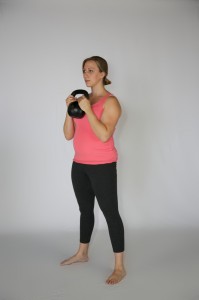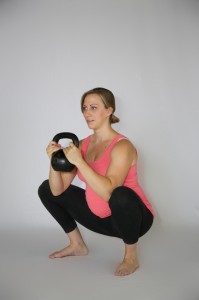Guest Post by Christine Mooney
When a Women’s Magazine Promises 98 New Ways to Have Explosive Sex, It Was Probably a Last-Minute List Thrown Together While Drinking Too Many Skinny Cosmos the Night Before Deadline
I stopped reading women’s magazines about ten years ago. Turned out, the information was almost always completely wrong, and, as this was a time before the public’s understanding that everything from the model’s armpit flesh to her eyelashes was photoshopped, it usually left me feeling bad about myself, as well. But it was in one of these last forays into the magazine aisle that I first heard about kegels. The word was printed beneath the emboldened promise of “Oh Ohhhh! Have Better Sex Tonight!” Well, well! I thought. Who wouldn’t want that? So on I read.
…And was admittedly a little disappointed. Kegels didn’t sound like a lot of fun. Pretend like you’re stopping yourself from peeing three to four times a day? Eh. But heck, I was game. I could only imagine what sexual nirvana awaited me with a strong pelvic floor.
So whenever I remembered to do them, I’d do them, completing sets of ten seconds here, a prolonged set there, but that’s only when I remembered to do them, which means, I probably logged no more than ten minutes of kegels over the course of the next decade. Attributing explosive sex to kegels was simply not to be.
A Decade after Reading Crappy Women’s Magazines, I Heard the Same Advice from the Medical Community
When I got pregnant in early 2013, doing kegels was the number two tip on the laundry list of “So you just found out you’re pregnant” checklist (the first was to stop playing Edward Forty-hands, the third, take your prenatal vitamins). Every baby book, doctor, nurse practitioner, ultrasound technician, and well-meaning stranger said the same thing: Kegels.
But a funny thing happened in the year or two leading up to getting pregnant, I got strong. Like “deadlifting more than double my bodyweight, pistol squatting a 20kg kettlebell, and repping out weighted pull-ups” strong. The point of kegels is to strengthen the pelvic floor, but I’d managed, without doing nary a kegel, to do just that.
Let’s break here for a second and talk about the pelvic floor. In a nutshell, the pelvic floor is a set of muscles in both men and women that provide support for pelvic-area organs (e.g. bladder and intestines — and in women, the uterus). Oftentimes, we hear about the importance of strengthening it in relation to two issues: maintenance of urinary continence and in facilitating birth by encouraging the fetus to rotate forward to navigate through the birth canal.
Okay, back to kegels (Key-gels? Kay-gels? Tomayto, tomahto).
So if I managed to wind up with strong pelvic floor without doing kegels, are they, then, the correct prescription?
Katy Bowman, a human physics scientist, says no.
She’s done a lot of work on the subject, and as she is an expert in this sort of thing, I’m going to let the following quote do most of the talking here:
A Kegel attempts to strengthen the pelvic floor, but it really only continues to pull the sacrum inward promoting even more weakness, and more PF gripping. The muscles that balance out the anterior pull on the sacrum are the glutes. A lack of glutes (having no butt) is what makes this group so much more susceptible to pelvic floor disorder (PFD). Zero lumbar curvature (missing the little curve at the small of the back) is the most telling sign that the pelvic floor is beginning to weaken. An easier way to say this is: Weak glutes + too many Kegels = PFD.
A kegel is simply a muscular contraction. Thinking of it in another way: it’s like flexing your bicep. And if you flex your bicep over and over, would it get stronger? No, not really. But you’d be very good at flexing your bicep (but, hey, maybe that’s your hobby).
Doing kegels compulsively will not get you a strong pelvic floor. It will get you a tight pelvic floor. Not the same thing.
For true pelvic floor strength, the prescription is simple.
Squat.
Squatting = A Strong Pelvic Floor
A full, deep, going-to-the-bathroom-in-the-middle-of-the-woods kind of squat is a natural, nay, primordial position for the human body. But the farther away we get from our natural ways of doing things, the harder it has become to give birth, go to the bathroom, keep our organs in the exact places where they should be, not pee when we workout (yeah, I’m looking at you, Crossfit), etc.
In fact, women in industrialized and post-industrialized nations oftentimes have much more difficult births than those in less modern societies where they have not given up on this natural technique and squatting during labor and delivery is a more normal practice. Plus, when you think about assuming a squatting position during labor, it does make a good bit of sense. You open your hips wide for baby’s arrival, and you employ good ol’ gravity as your friend and ally.
Of note: the reason childbirth has been more painful for humans than, say, for a cow or dog or any other of Mother Nature’s quadrupedal creatures, is that as we stood up and became bipedal, our hips narrowed, making the birth canal more narrow. Squatting helps open the hips back up.
The Squat Prescription
Regularly performing a squat with your full range-of-motion is crucial to developing a strong pelvic floor.
Notice how I say “your” full range-of-motion. A true full squat is ass-to-ankles, but if you can’t get to that position quite yet, that’s fine. Practice squats, and barring any true physical abnormalities or restrictions, you’ll be able to get there.
I recommend squatting in two forms.
1) Sets of weighted front squats or goblet squats (the more pregnant I got, the more comfortable I felt sticking with goblet squats with one kettlebell)
and
2) Spending as much time each day as you can (working up to 10 minutes total, though Ido Portal’s challenge is to spend 30 minutes a day) in a bodyweight squat position.
With Squat Recommendation #2, it’s easy. When you have a chance – and are weighing stretchy pants – pop down into an ass-to-grass squat. Squat Recommendation #1, however, requires a little programming advice. In order to get a stronger pelvic floor, you need to get stronger. Which you do by lifting heavy some of the time. So I like the idea of starting out with three sets of five reps of the front or goblet squat, alternating the days that you do those with your deadlift days.
Squatting (pregnant belly optional) should look like this:
Some key points to remember when squatting:
Keep your feet firmly planted on the ground. If you find your heels popping up, limit your range of motion a little.
Your stance should be about shoulder-width with your feet pointed out slightly (no more than 10-20 degrees).
Keep your chest proud and back straight. This isn’t so much of an issue when you are doing an unweighted squat; however, while under load, it is very important not to round your back.
Actively pull yourself between your hips. Don’t just sink into the squat.
At the bottom of the squat, pause before exploding back up. Don’t bounce up from the squat. This is a grinding movement.
Keep your knees tracking over your feet. Don’t let your knees bow inward as you stand back up. This is what makes squatting dangerous for the knees. You can use some cues like thinking that you are riding the horse or trying to push the earth apart with your feet.
Stand all the way up! Just as you shouldn’t cut the range short at the bottom of the squat, don’t cut it short at the top. Simply stand all the way up — don’t keep slack in the knees and conversely, don’t overarch either.
It’s important to remember that this discussion on pelvic floor strength isn’t limited to pregnant women. It’s extremely important for anyone — men and women alike. And while kegels may not be entirely useless, you’ll get more from squatting than from kegels because squatting is a hugely crucial exercise. Crucial to keep your core and lower body strong and mobile.
So when it comes to the age-old question, to kegel or not to kegel, I’d say skip it, grab a favorite read (preferably not one that boasts 34 TOTALLY NEW WAYS TO TONE YOUR TUSH…BY TONIGHT! on the cover) and pop your butt down into a deep squat for a spell. Whether or not, sex becomes “explosive,” well, I’d prefer you kept that to yourself.
New mom Christine Mooney is a fitness writer, editor, and lifelong athlete. She helps fitness professionals get the word out, reach more people, and profit with integrity through minimalist marketing (focusing on the “vital few” efforts for the greatest return). She helps clients build an online platform, establish credibility, authority, and celebrity, and get published. She helps them build a magnetic brand, cultivate a movement, and get people talking. She has worked with clients ranging from the single largest multimedia retailer in the United States to top health and wellness fitness bloggers. And she can help you. To chat about your own marketing goals, email her at Christine.Suzan.Mooney@gmail.com.


I LOVE PLAYING FORTY HANDS!!! ahahah me and my friends duck tape two fortys (one on each hand) trying going pee with all that. LOL
at least this is what i think you mean by playing edward forty hands LOL if not disregard my excitement
haha That’s EXACTLY what I was thinking, Alex!